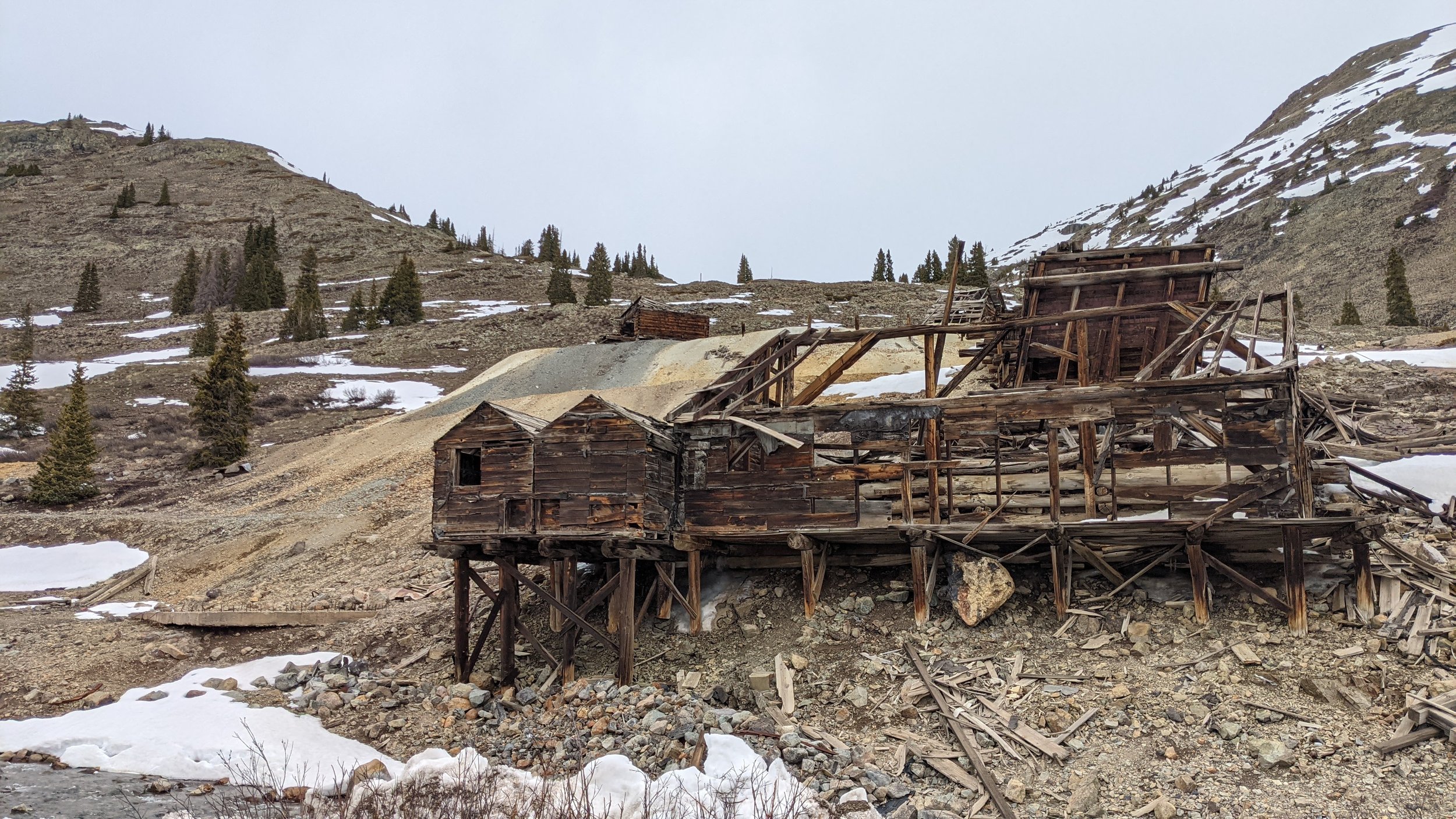
Animas Forks, Colorado
One of the most visited & popular ghost towns in Colorado.
Animas Forks is a popular and well known ghost town in the San Juan Mountains of southwest Colorado. The site is popularized by the 4x4 crowd who travel the Alpine Loop from Silverton to Lake City. However, day-trippers from Silverton also venture to the townsite to explore.
Sitting at a lofty 11,200’, the town of Animas Forks saw its beginning take shape in 1873 as the first cabin was being built and hewn from local timber. Originally called, ‘Three Forks of the Animas’ (due to a branching of the headwaters of the Animas River), the name was later shortened to just Animas Forks.
Due to the discovery of silver and gold, Otto Mears (of Million Dollar Highway fame), built a wagon track two years later in 1875. Needless to say, this helped to usher in scores of prospectors and those who would come to build the infrastructure needed by said miners.
By 1876, the town had 30 cabins, two saloons, a post office, hotel and a general store. For the next six years, Animas Forks simultaneously, grew substantially and suffered calamity.
William Duncan in 1879 built the towns’ only two-story home for his wife and family; made famous by the French windows looking east. It is now usually referred to as the Duncan House. The Kalamazoo Hotel went up touting a grand piano and the towns only telephone. By 1879, there was also a blacksmith, a drug store, two butchers, two boarding houses, the Merrier Hotel and the Flagstaff House and restaurant.
By 1883, Animas Forks saw its first newspaper (The Animas Forks Pioneer) open shop. By this time, the town had roughly 450 people. But alas, the newspaper was short lived. It ended in 1886.
Most people in Animas Forks were not year-round citizens. The exceptionally high-altitude and severe winters drove most people down valley to Silverton (9,320’) where it was warmer. In fact, the winter of 1884 was extremely unforgiving. A blizzard moved in and over the course of 23 days, dumped 25’ of snow on the mining town. Tunnels had to be dug between buildings to allow people to leave their homes.
For the most part, the decline of Animas Forks started in 1891 as a fire broke out in the kitchen of the Kalamazoo Hotel. It razed the hotel and burned 14 other buildings. Roughly $20,000 (1890’s terms) in damages was reported from the hotel alone. Even though the hotel and some of the other buildings were rebuilt, the town never fully recovered, some people permanently moved away.
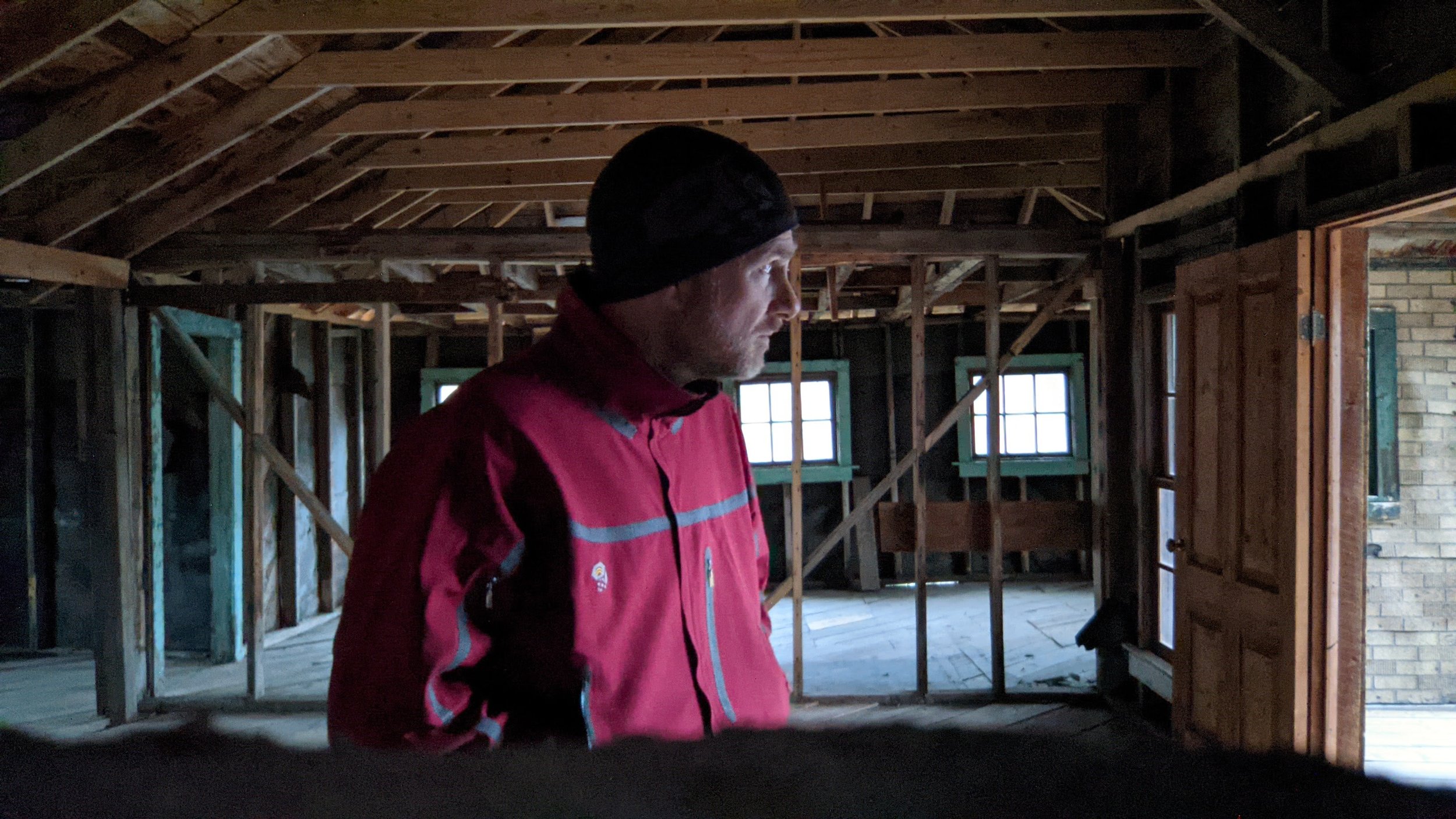
Myself watching the clouds outside
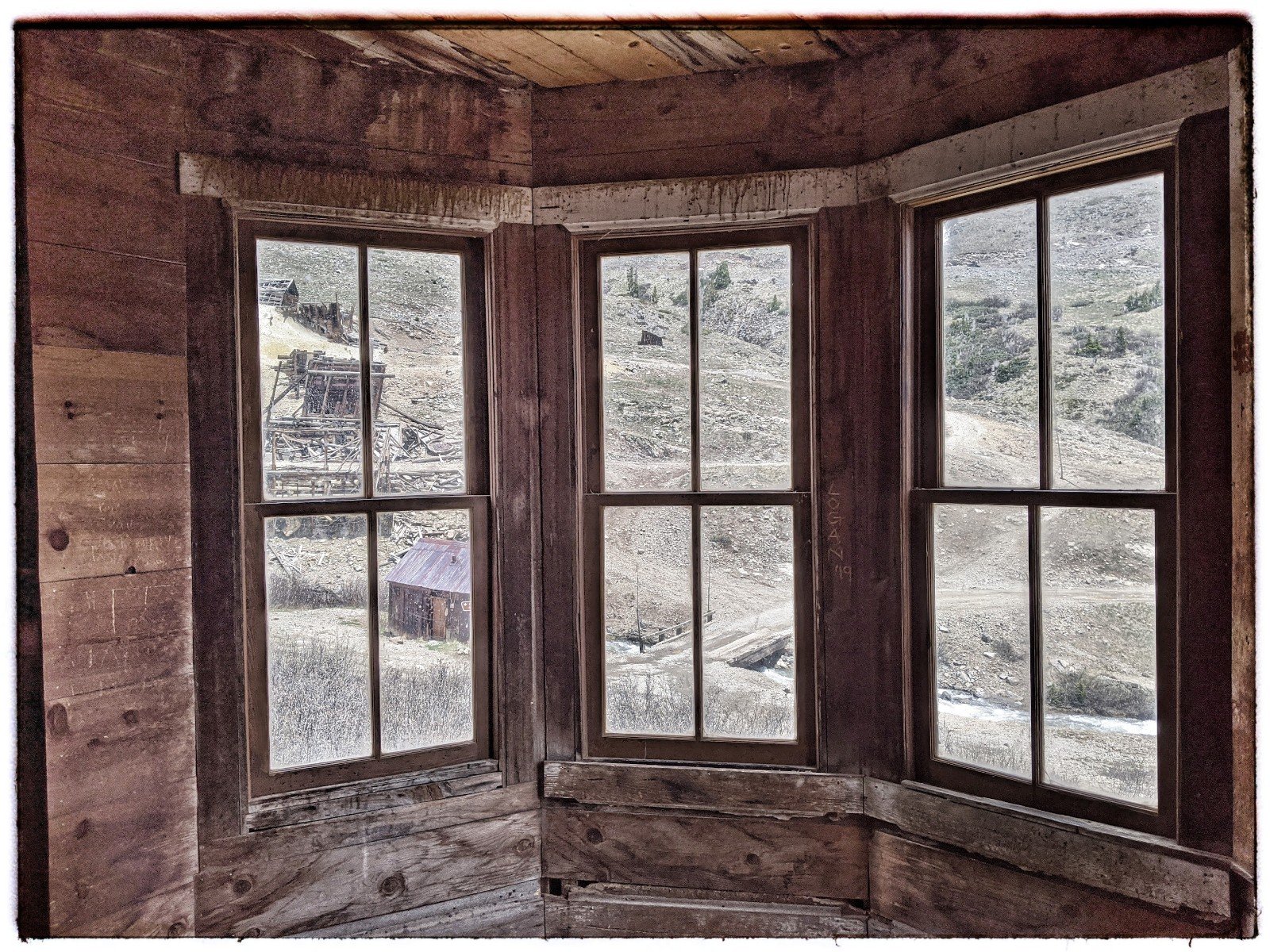
The famous French Bay windows of the William Duncan household.
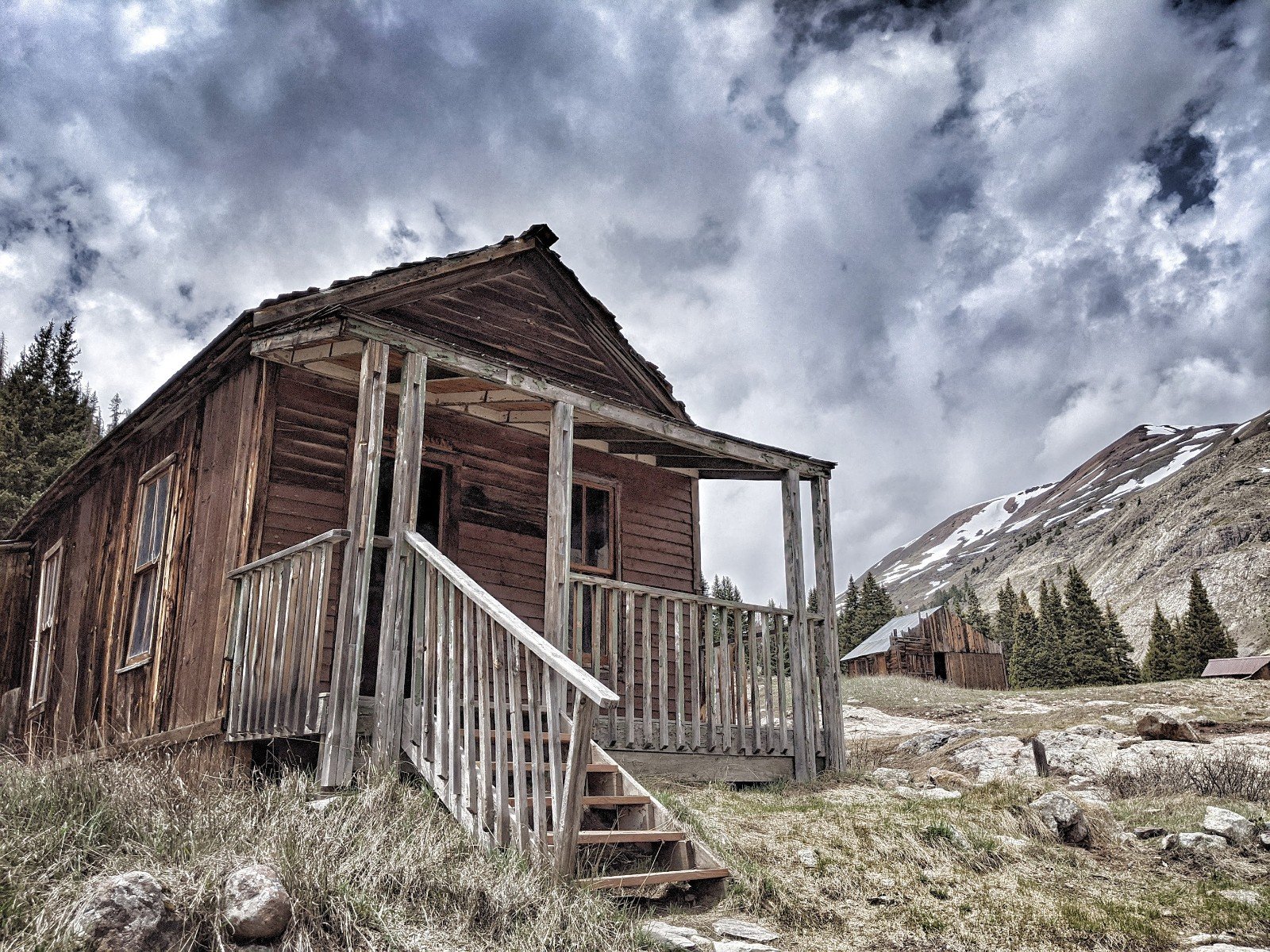
Random cabin at Animas Forks

Inside another building
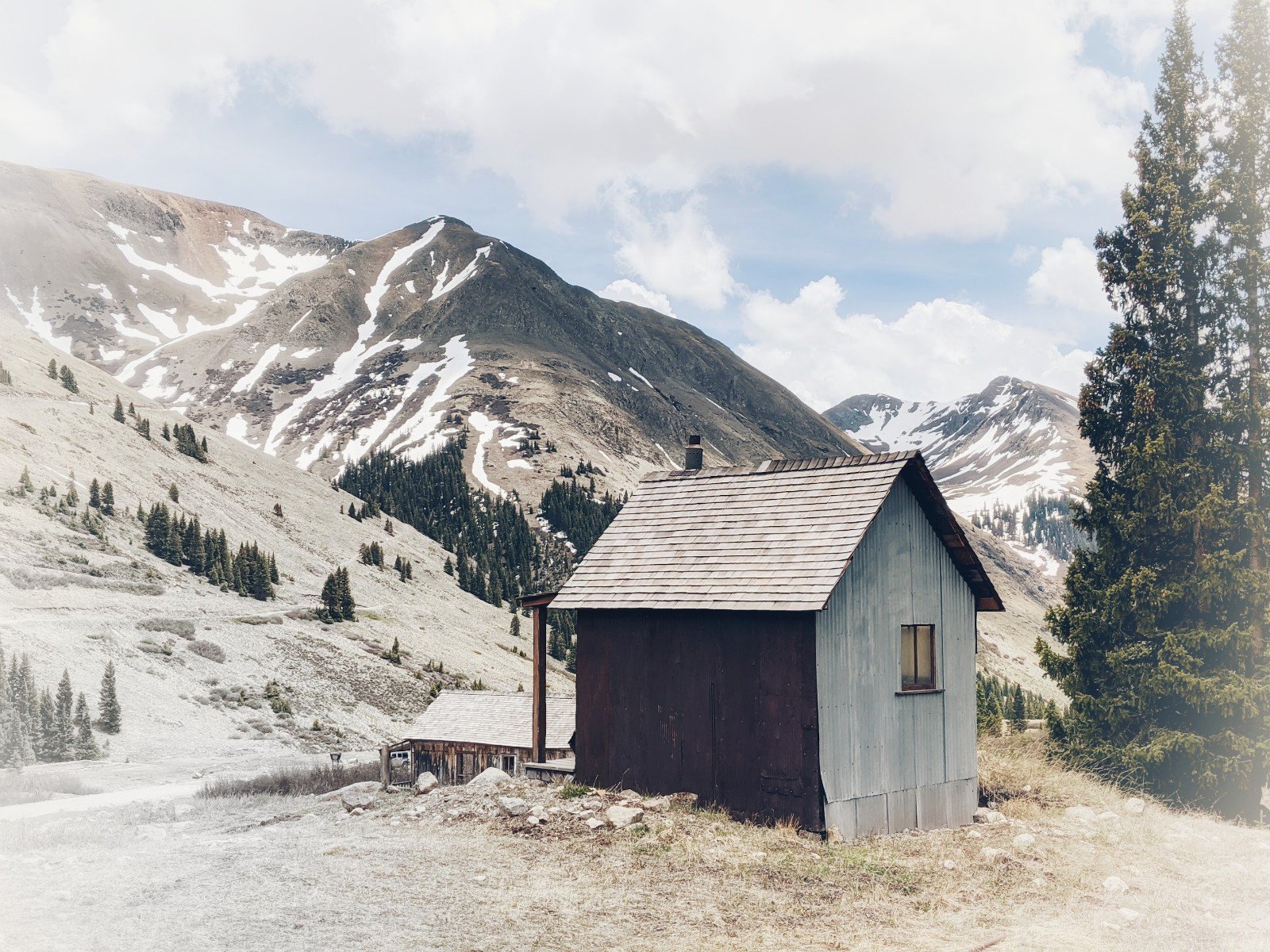
An outhouse at the townsite

Regina & Faith
But Animas Forks hung on. She wasn’t going down without a fight. The town experienced a slight rejuvenation in 1904 by way of two events. The first was that Otto Mears built the Silverton Northern Railroad to Animas Forks. On the back of this achievement, the Gold Prince Mill was built with supplies shuttled up by the railroad. It was the largest and most expensive mill to date with 100 stamps and a capacity of 500 tons/day. Ore was brought into the mill via an aerial tramway that ran about 12,600’ in length. Plus, with slowly declining ore prices and lower quality ore being pulled from the mines, the mill validated ongoing work in the mines as it lowered operational costs.
The Gold Prince Mill closed its doors in 1910. It was dismantled and moved down valley to the Sunnyside Mill in Eureka. By then, Animas Forks only had 90 residents. Another fire rocked the town in 1913 and two years later in 1915, the post office closed for the third time, this time permanently. By 1921, Animas Forks was basically a ghost town. The railroad tracks were pulled up in 1936 and the last active mine, the Columbus Mine, was gated and shut down.
Animas Forks….
For its time, Animas Forks lasted far longer (~50 years) than most mining towns. But due to too many extenuating factors such as: declining ore prices, harsh weather & winters, fires, the Silver Crash of 1893 and low-quality ore, the town just couldn’t survive the constant barrage of factors against it.
Animas Forks is slowly being renovated now. The first round occurred in 2007-2008. Due to a land swap in 2009 between the BLM and San Juan County, Animas Forks now lies entirely in the hands of the BLM. Another round of renovations occurred in 2013/2014 with a money grant from the Colorado Preservation Society. The town was added to the National Register of Historical Places in 2011 which opened up the money for the second round of renovations. Currently, the oldest structure at the townsite is the two-room jail (1875).
Some of the better producing mines in the Animas Forks/Denver Hill Plateau area included: Silver Coin, Gold Prince, Columbus, Early Bird and the Big Giant Mine.
The Frisco Mill above Animas Forks
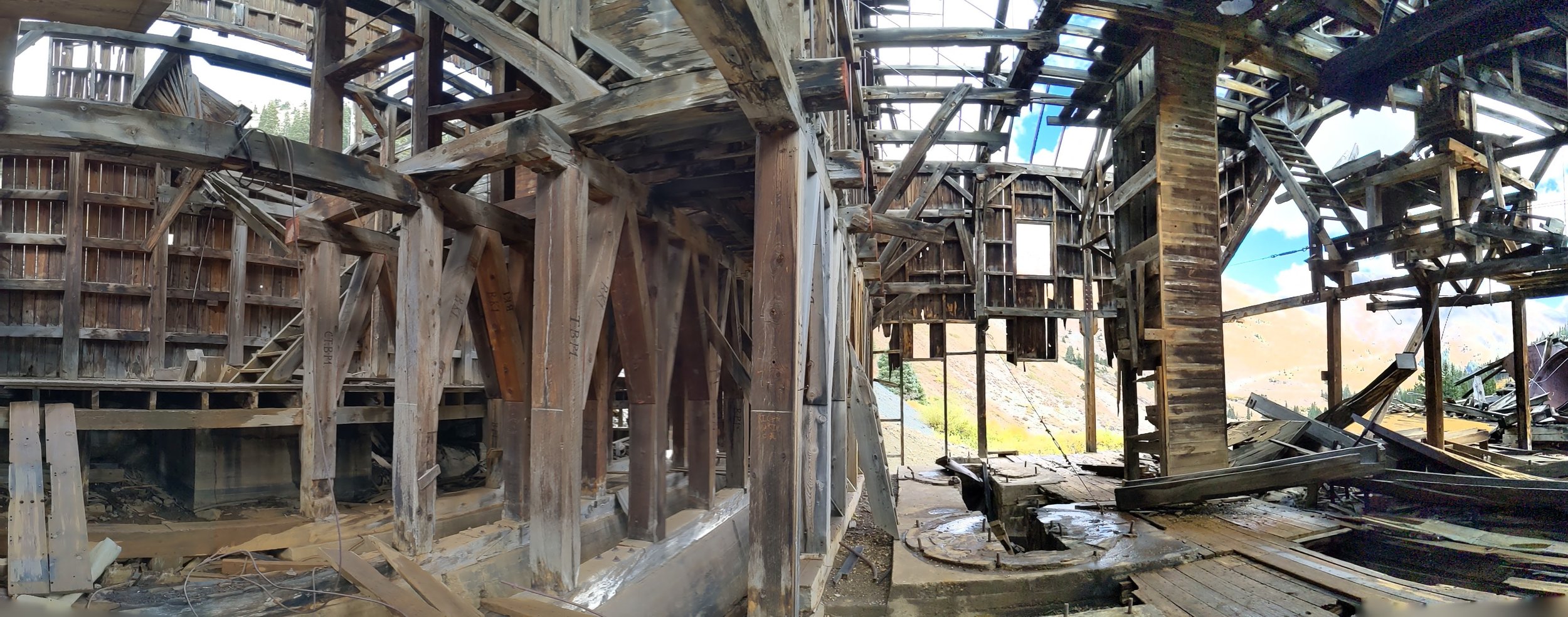
….Inside the Frisco Mill

